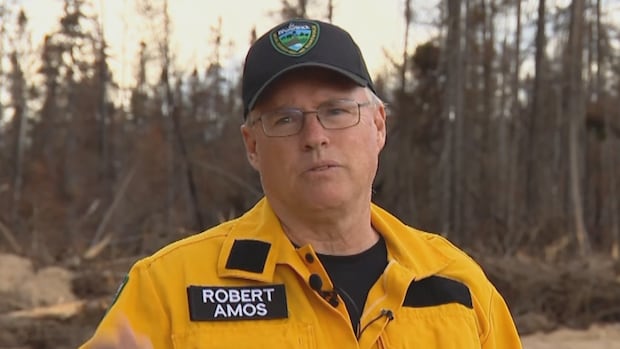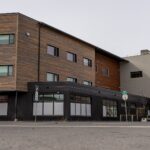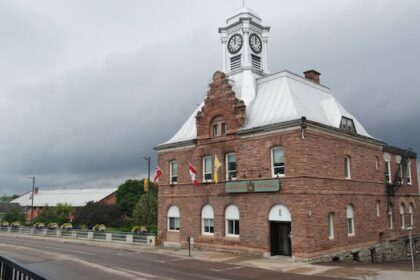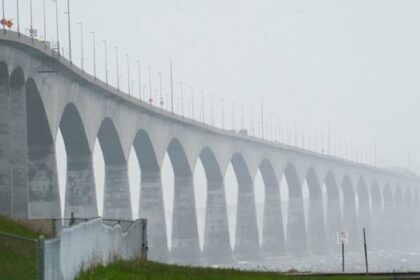New BrunswickThe flames and most of the smoke from New Brunswick’s largest wildfire of the year are gone, but the area around the Oldfield Road fire near Miramichi is still being patrolled. Provincial official recalls challenges of battling blaze that consumed 1,402 hectaresCarolyn Ryan · CBC News · Posted: Sep 19, 2025 4:31 PM EDT | Last Updated: 2 hours ago’It was dry, burning the trees, going up, torching the trees,’ Bob Amos, a forest ranger and firefighter, said of the Oldfield Road fire in northern Miramichi. ‘Anytime you tried to put it out and tried to get close, the right wind would just blow it across ahead of you.’ (Silas Brown/CBC)The flames and most of the smoke from New Brunswick’s largest wildfire of the year are gone, but the area around the Oldfield Road fire near Miramichi is still being patrolled. The fire officially known as Oldfield Road Fire #208 broke out on Aug. 6 and ended up threatening Route 8 and consuming 1,402 hectares of land before being brought under control on Sept. 2.It is still not classified as officially out, with heat-registering drones still doing passes.The cause is still unknown, other than being related to human activity, Department of Natural Resource officials said during a media tour of the area Friday. WATCH | See the aftermath of the Oldfield Road wildfire: A New Brunswick firefighter explains how they fought the Oldfield Road fireThe fire that began Aug. 6 was the province’s largest this year, burning over 1,400 hectares and posing difficult conditions for those fighting it. Soon after the fire was reported to a 911 operator the afternoon of Aug. 6, a bulldozer was brought in to scrape off the land for an operating base, said Bob Amos, a forest ranger and firefighter with the department’s Miramichi office.”We tried to make it in a central area where everyone could meet,” he said, standing in the bare dirt circle that used to hold equipment trailers, food service areas and tents.The Oldfield Road fire, pictured in a government handout photo in mid-August, ended up burning just over 1,400 hectares. (Government of New Brunswick)”When I got here … there was a lot of flame. It was dry, burning the trees, going up, torching the trees. Anytime you tried to put it out and tried to get close, the right wind would just blow it across ahead of you. … Once it got up into the trees, it would just start rolling.”And there was no way you could stop it.” At the fire’s peak, there were 11 bulldozers and four excavators to create fire breaks, four water tenders and other pieces of heavy equipment, as water bombers did their job in the sky with retardant foam and water. Up to 125 people were on duty, a varying number as other fires broke out across the region.”There were some times there, when the lightning struck, we were down to not very many people because they were taking people from here to the other fires,” Amos recalled. Amos is a forest ranger and firefighter with the Miramichi office of the New Brunswick Department of Natural Resources. The photos on the desk show images from the early days of the Oldfield fire. (Silas Brown/CBC)That was because the other fires were closer to more densely populated areas, with structures to save. After that Aug. 13-14 lightning storm, Amos said, there was one fire operations official who took off from the airport and could see eight columns of smoke rising from new fires caused by strikes in eastern New Brunswick forests “from here to Saint-Quentin.” The visible smoke was like the tip of a very hot iceberg, in a way. Officials said lightning can cause underground fires that smoulder in dry tree roots for up to a week before emerging as a new fire.The ribbon shows where the edge of a proposed fire break was marked, and the muddy area is where it was added in an attempt to slow down the flames. (Silas Brown/CBC)”There’s no indication that it’s even going to start a fire,” Amos said. “Two or three days later, up it pops. You get the right wind, you get the right humidity, a number of things.”Crews fought the blazes with everything they had in their arsenal, sweltering in 40 C temperatures and trying to follow advice to rest when they could and drink one bottle of water every 20 minutes to ward off dehydration. WATCH | Looking back at the detours drivers took to avoid the fire: See the detour drivers are taking to avoid out-of-control fire in Miramichi areaA detour around the out-of-control wildfire along Oldfield Road, which has grown to nearly 1,400 hectares, was busy on Wednesday, with many drivers appearing to head north toward Bathurst. “There’s times that we had to haul out because it was just too — the fire behaviour was too extreme, the heat was too much,” Amos said. “The wind would be going one way and it’d swirl, and it’d come back on you, and you got a bunch of embers all over you. And it’ll catch behind you, and sometimes you just have to haul out.” He recalled one day when the fire moved by 2½ kilometres because the conditions were just right for it to spread. The Oldfield Road fire didn’t consume any buildings but it did destroy some poles on power transmission lines. A vast area of forested land was left blackened and charred.Forest ranger Bob Amos with one of the trees destroyed by the fire, which would have been about 30 years old judging by the number of rings. (Silas Brown/CBC)Amos pointed to one burned tree that was chopped down after the fire went through, still showing bright healthy rings that indicated it was about 30 years old. Black spruce is the most flammable of the softwood fuel for the fire, he added. Amos said this was the worst fire season New Brunswick has seen since about 1987, and “a lot of the firefighters we have now weren’t even born in ’87.”With files from Silas Brown
‘It would just start rolling’: A close-up look at how the Oldfield Road fire was fought











